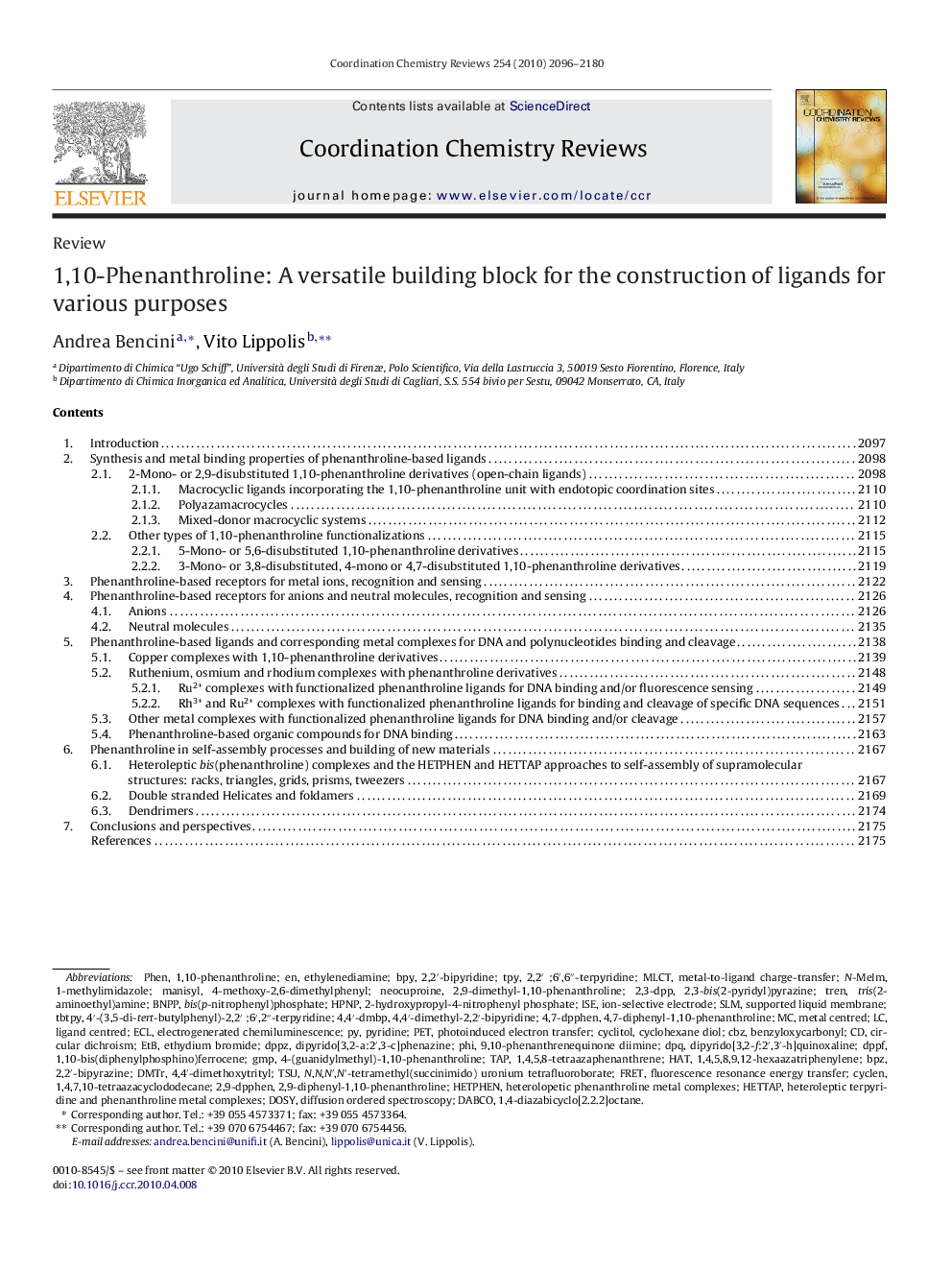| Article ID | Journal | Published Year | Pages | File Type |
|---|---|---|---|---|
| 1300637 | Coordination Chemistry Reviews | 2010 | 85 Pages |
This review will cover the developments in the chemistry of phenanthroline-based ligands in the last 10–15 years. 1,10-Phenanthroline (phen) is a classic ligand in coordination chemistry, which couples versatility in metal ion binding with peculiar properties of its complexes. For instance, metal complexes with phenanthroline can be featured by an intense luminescence or can interact with DNA in an intercalative fashion inducing, in some cases, DNA cleavage. For this reason a number of phenanthroline-containing ligands has been recently synthesized by inserting phenanthroline within open-chain or macrocyclic backbone, in order to develop new molecular chemosensors for metal cations and anions, ionophores as well as new intercalating agents for polynucleotides. Furthermore, phenanthroline is rigid and its insertion within cyclic or acyclic structures can impart to the resulting ligand a high degree of pre-organization, affording selective complexing agents. This review will discuss on the coordination, luminescence and intercalating and/or DNA cleaving properties as well as on analytical applications of metal complexes with phenanthroline-based ligands. Particular attention will be devoted to macrocyclic receptors or open-chain ligands that, beside the phenanthroline nitrogen atoms, contain other donor atoms able to interact with the metal cations or anions.
